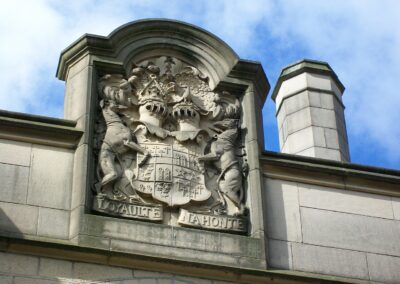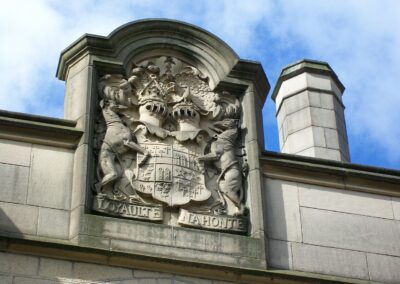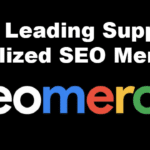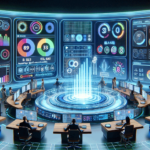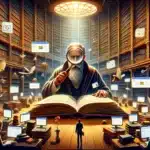Written by
The Web Design Nottingham team at Nicada Digital. Local website designers bringing stylish, responsive website designs and SEO to businesses in Nottingham.
The History Of Nottingham Castle
Robin Hood has been a popular folklore character for centuries. So much so that he even has his own Robin Hood statue not far from the Castle Nottingham gates, but what really happened at Nottingham Castle?
Below we’ll take a look at all aspects of the history of the Castle, from the original Nottingham Castle beginning as a Medieval Castle, to the English civil war, touching upon the roles that the famous characters played in a brief history overview. Names such as Henry I, Henry II, Edward II, William the Conqueror, Henry VII, Oliver Cromwell, Henry III, and Queen Isabella will all get a mention so please read on and find out what else the castle’s history has to offer.
The castle site of Nottingham Castle today looks very different from its beginnings as a medieval castle, wooden motte-and-bailey fortification. But the true story behind this venerable old building is just as exciting: it’s tales of Kings and Empresses, a prominent Lord or two, Governors, Dukes, and ordinary people like you. It’s great battles against tyranny; its bloody history, sieges to protect freedom; principled stands to uphold justice – all in all, 1000 years worth!
In the years following the Norman conquest of William the Conqueror in 1066, William began asserting his control over England and built Nottingham Castle. The castle was a wooden motte-and-bailey design with earthen banks topped by a timber palisade. However, within 100 years of its construction civil war had broken out resulting in bloody battles including one at Nottingham where Matilda’s half brother Robert of Gloucester besieged it but could not take it so instead plundered the town before moving on to York which they were able to capture for Stephen who reclaimed power from Empress Maud as King Henry I under her watchful eye after being declared heir apparent and crowned king himself upon their father Duke Geoffrey’s death while she was imprisoned during this time.
The army of King Stephen army was defeated at the Battle of Lincoln in 1141. After his death, Henry II became king and added stone walls to Nottingham Castle’s wooden palisades as well as built many new buildings including “a house for the King’s falcons”.
The siege of Nottingham Castle was a decisive historic battle in the civil war between King Richard I (Richard The Lionheart) and his brother Prince John. The castle surrendered before King Richard could use one of his last weapons, a giant trebuchet that would have pounded their defenses into rubble at great speed with heavy stones.
Richard died a few years later and John was crowned king. Whilst King John enjoyed some level of power, the barons soon forced him to sign Magna Carta in 1215 guaranteeing their rights while limiting his own authority. The castle’s defenses at this time were much strengthened by King John as well – Nottingham Castle became one of England’s most important fortresses during this period when it acted both as an arsenal for military supplies against invasion from France or Scotland.
Edward III, only 14-years-old at the time of his father’s death in suspicious circumstances and crowned King Edward III three years later, relied on a coup d’état to overthrow young Edward’s mother (Isabella) who ruled as regent with her lover Roger Mortimer. The King raided Nottingham Castle using a cave tunnel through sandstone rock called “Mortimer’s Hole”. There he seized Roger Mortimer for treason before executing him by hanging then claiming Parliament here from 1329–1330 where important legislation was passed including England being declared an indivisible realm free of feudal overlordship.
The infamous Richard II commanded the deaths of two Earls at Nottingham Castle in 1397. This was a decisive moment that would lead to his own death and King Henry IV took over as monarch after overthrowing him. What made this even grimmer for England is when he gifted the castle to Joan, who then built 4 windmills on Brewhouse Yard called Sparrow, Donne, Dosse, and Gloff.

The Wars of the Roses
The Wars of the Roses were an epic series of fifteenth-century English civil wars for control over the throne, fought between supporters on two rival cadet branches from Royal House Plantagenet. The War was a heated battle that took place between followers who supported either red or white roses as their symbol to represent themselves and showcase what they stand behind in terms of allegiance and cause.
The War of the Roses, also known as The Cousins’ Wars and sometimes simply called “The Rose War,” was a series of wars fought between two branches or houses related to each other. It all started after King Henry VI became mentally infirm and weak in power which resulted in more interest for some nobles over who would be heir to his throne – either Richard III (House York) or Edward IV (House Lancastrian). Eventually, these small disagreements escalated into major conflicts throughout England with battles that lasted from 1455-1487 until both lines were eventually eliminated due to war casualties.
When Richard of York died in 1460, his heir Edward took over. With this takeover came Lancastrian resistance as they counterattacked and the War continued on until a decisive battle at Towton where Edward was victorious with no serious opposition left. However, an uprising occurred again in the North by some loyalists but it didn’t last long enough to be considered dangerous for him because he had been crowned king already!
The wars escalated in 1469 when the most powerful noble, Earl of Warwick switched his allegiance from Edward to Lancastrian. Fortunes changed as Yorkist and Lancastrian forces exchanged victories for only a year before everything was upended with even King Edward captured briefly by the Ludlow Parliament. When he fled to France in 1470, Henry VI returned as King but this time it didn’t last long after being overthrown again at Tewkesbury where Lancaster’s army lost their battle against Yorkists led by Richard Neville, 16th Earl of Warwick (the “Kingmaker”)
Edward IV was able to enter London unopposed and resume the throne after he (probably) killed Henry. After that, Edward ruled without any opposition until his sudden death in 1483. His 12-year old son reigned for 78 days before being deposed by Richard who became king himself afterward as a result of him having later executed all threats or competition to his position on the throne when they were still alive with their offspring under either age 18 or female.
The fall of the House of York
From rebuilding to Bosworth
Between 1476 and 1480 Edward spent lavishly on Nottingham Castle, adding new comfortable State Apartments in the Middle Bailey and a defensive six-sided tower, known as Richard’s Tower. After Edward’s death, Richard devised a bloody path to the throne that involved him killing off several family members. It was from his “castle of care” at Nottingham that Richard III would raise his standard and depart for the Battle of Bosworth in 1485. At Bosworth, where he killed many people with Jasper Tudor led by Lancastrians who had already taken over most love castles like London.
Tudor decline
Tudor decline was a time of hardship for the people living in Nottingham. When King Henry VIII visited, it had been years since he last stayed at Nottingham Castle and became less fashionable to visit due to poor upkeep. The only other person who wanted anything from this place was James I – Earl Rutland’s predecessor as king- when he bought Wollaton Hall along with Thurland Hall (to be fair both were already gone). Anyways, once again we see that Tudors’ reign leaves more trouble than peace behind them like they always do!
Civil War
The Civil War was a long and bloody conflict, but one of the most interesting facts is that it started in Nottingham when King Charles I raised his standard on 22nd August 1642. The town wasn’t even his for very long – he quickly left after finding little support there to fight against Parliament supporters who controlled much of the surrounding region.
The Nottingham Castle governor, John Hutchinson, refused to give up the town throughout and during the war despite numerous raids by Royalists from nearby Newark. He even ordered St Nicholas’s church to be destroyed when it was used as a vantage point for invading troops to fire over his walls.
Diaries and Death Warrants
Lucy, John’s wife wrote a diary during the war and this intimate first-hand account of the Civil War has remained an important source for historians and other interested parties. She also acted as a nurse tending to both wounded Parliamentarians and Royalists. Lucy’s Memoirs are on display in the new Rebellion Gallery where you can see them for yourself!
In 1649, Charles lost the war and would later lose his head with John Hutchinson being one of the signatories. Nottingham Castle also suffered as by 1817 it had been largely demolished when John ordered for its remaining walls to be destroyed in order that they could never again provide a military advantage against Britain’s people.
Ducal Palace
The Ducal Mansion Palace, built in 1678 by the Duke of Newcastle after purchasing Nottingham Castle in 1663. The palace is considered one of England’s finest examples of Renaissance-style architecture and has been described as “the most elegant house ever seen.”
The Ducal Mansion Palace was originally constructed to replace William Cavendish’s previous residence at Nottingham Castle. However, construction on the new home did not begin until he bought Newport Castle from Charles II following his return to power upon English restoration (1660). Ducal Palace, not completed before its owner died twelve years later, became known for being “one of England’s first and finest Italianate houses; a building that set an example worthy even for Versailles itself.
The Industrial Revolution
The grandeur of the Palace was lost to Nottingham’s industrialization. No longer a provincial town, it had become an industrial center and hotbed for unrest in 1848 when the Castle Nottingham last held its Great Ball. The smog-filled streets lessened any appeal that might have been found from looking at the castle itself – which is what happened fifty years later with Miss Kirkby living on one story level all by herself because she could not bear being away from her pet ape after he died. After they left (in 1776), Clumber Park became their new home where more secluded palaces like this were made available to them instead of staying put back here in England.
The palace torched by rebels
Nottingham was a notoriously squalid town in 1831. The Duke of Newcastle had been residing there for centuries, but as the fourth duke, he left it empty and vacant to his family’s disdain since electoral reform seemed unlikely given their vehement opposition to extending voting rights or ending corrupt practices within the system. When news that this bill failed reached Nottingham, people rioted against shops and houses all around them before storming to enter the Nottingham Castle grounds where they were met by armed guards who drove off most attackers with fire from cannons mounted on its towers until enough men could be assembled outside the gates so that any hope of reclaiming control over property through force would not become possible again.
The people of Nottingham watched as the Palace burned like a giant bonfire. They were silent, knowing that it would be 45 years before they could see their Duke’s great house again.

The Nottingham Castle Museum And Art Gallery
The Nottingham Castle Museum was built by the hands of the sixth Duke and it has a long history. In 1875, architects T.C Hine came to an agreement with him in order to turn his home into a Museum and Art Gallery that would be available for all people from Britain or around the world who are interested in decorative art collections, old or new. After completing this task on time, the castle served as one of many museums dedicated solely to fine art at its opening under George Harry Wallis’s supervision- also known as curator – where he designed exhibits meant to inspire imagination and creativity both young and old alike through different aspects such as painting styles ranging from Impressionism like Van Gogh’s work “Starry Night over Rhone Valley”.
The public art gallery, located in the town of Nottingham, sparked the inspiration for pattern designers and other artists alike. Thankfully it survived a potential second arson attack back in 1913 when Suffragette bomber Eileen Casey was arrested with a hatbox full of explosives that may have included this as one of her targets! The destruction of such an inspirational art gallery would have been nothing short of a catastrophy.
Upon the outbreak of World War Two, Nottingham Castle was commandeered by the Army and used as a lookout station. An anti-aircraft gun perched itself upon the Middle Bailey while space on lower bailey became given over to growing crops for their troops stationed nearby in Colwick camp. The time allotted each prisoner from Italy who tended these gardens were spent tending allotments with prisoners released from other camps being relocated here; such is how they found themselves amid one occupier’s war that had been waged against another long before them.”
The castle houses many great pieces of art and artifacts. Some include world-famous lace, salt-glazed stoneware, Nottingham alabaster, and artwork by some big names like Richard Parkes Bonington Paul Sandby Dame Laura Harold Knight Winifred Nicholson Evelyn Gibbs Magdalene Odundo Zanele Muholi Edmund de Waal
The Castle Museum in Nottingham Castle hosts a wide variety of museum items on its grounds including the famous examples from our local artist – Arthur Shoosmith’s “Sunset” oil painting for example. They also have an eclectic mix ranging from 10th-century sword to paintings made during periods such as the Victorian era up until today!
…so that’s just about it for the overview. Lots of great history and well worth a visit and of course don’t forget to visit nearby Sherwood Forest too whilst you’re about and remember to get a photo of the Robin Hood Statue too!




